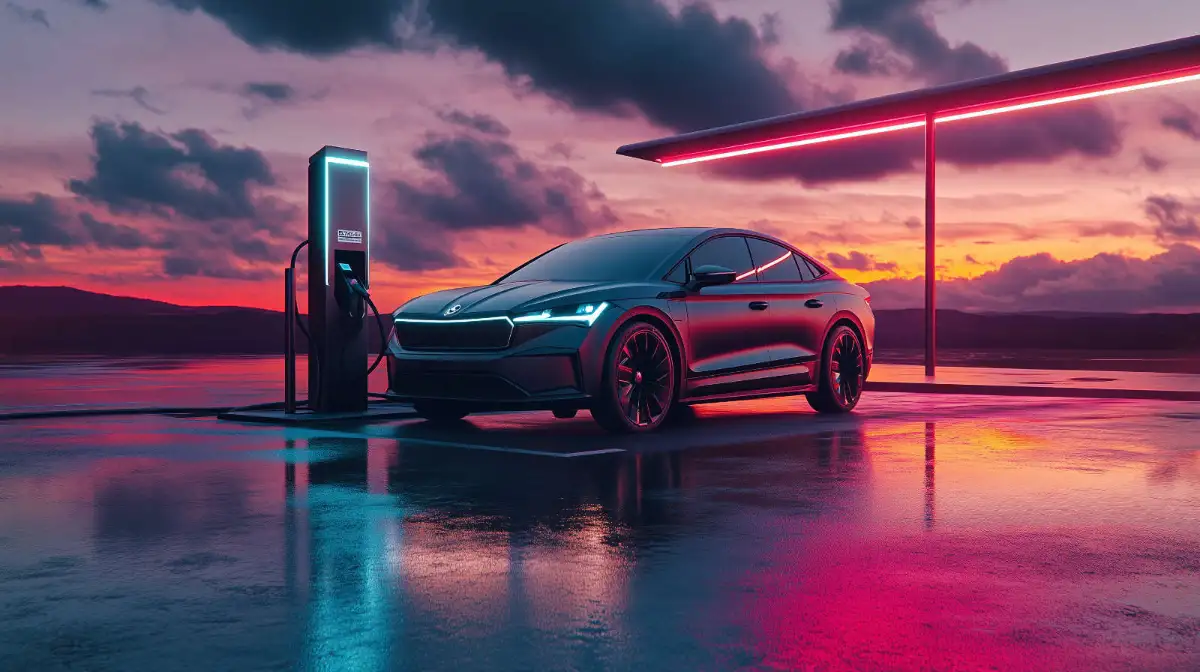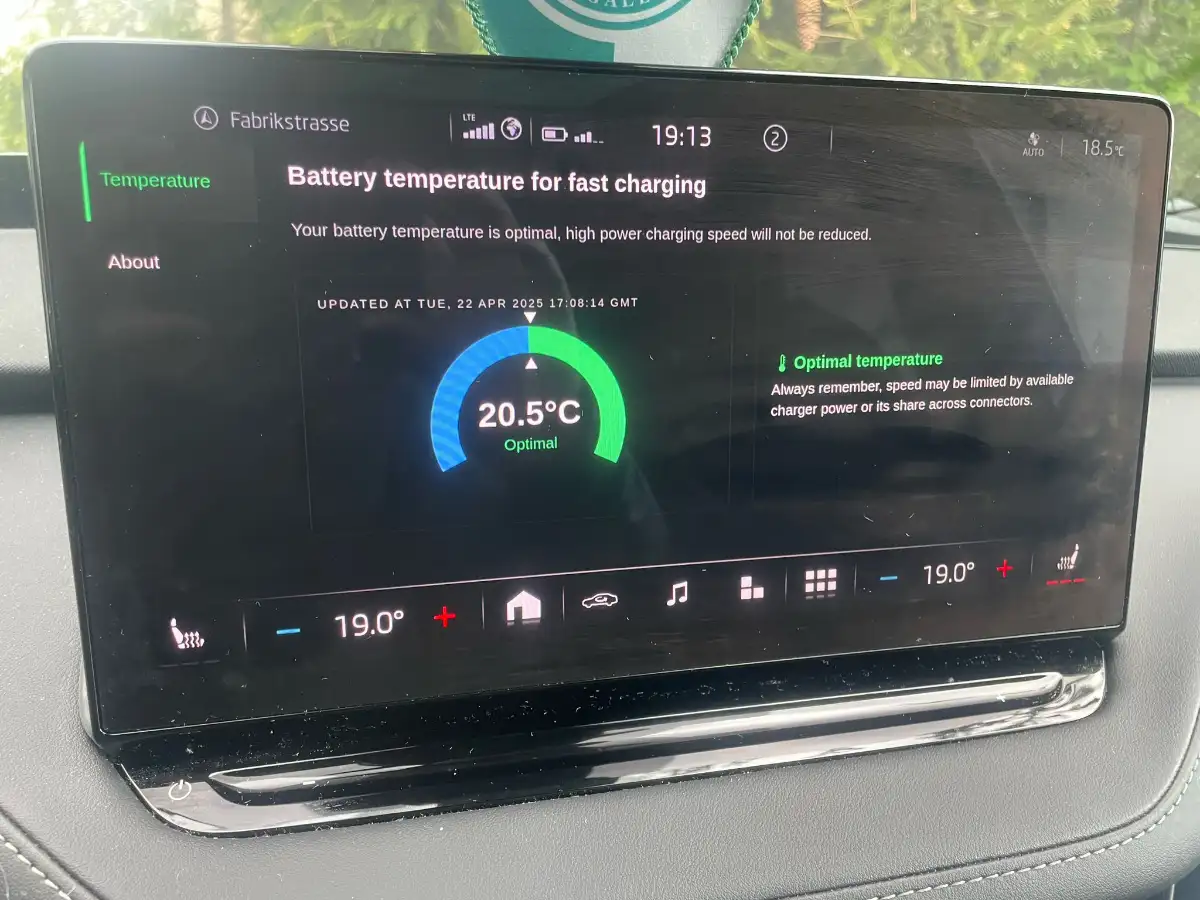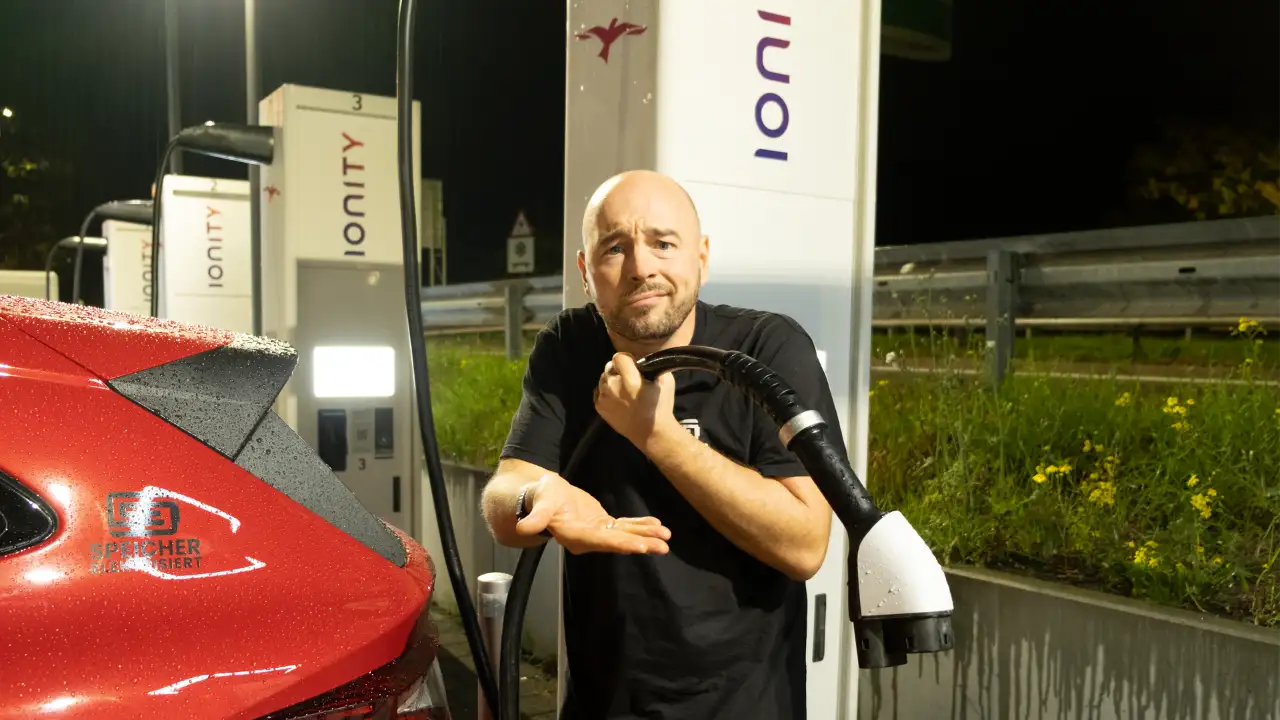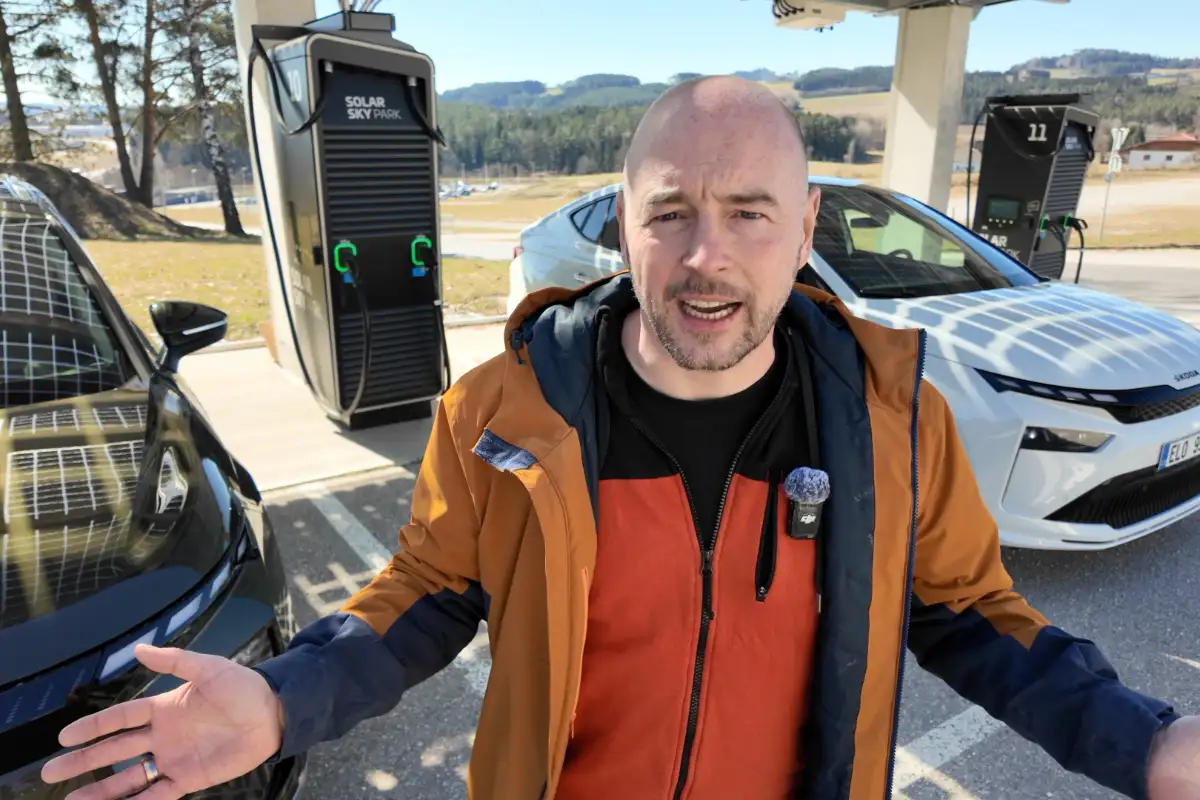When buying a Škoda ENYAQ, many people wonder: which charging power is right for me?
Especially the difference between 135 kW and 175 kW models often creates uncertainty. While it may seem that more charging power is always better – the reality is a bit more nuanced.
In this article, I’ll break down how different charging capabilities affect real-world performance and help you decide which option fits your needs best.
Charging Speed: 135 kW vs. 175 kW
Charging speed depends on more than just the maximum power rating. Key factors include:
- Battery temperature: A warm battery charges faster. Thanks to battery preheating via route planning, this is now much easier in newer ENYAQ models.
- State of charge (SoC): The fuller the battery, the slower it charges.
- Charging plateau: How long can the car maintain peak charging power before it tapers off?
What does that mean in practice?
- The 135 kW ENYAQ holds its charging plateau up to around 50% SoC.
- The 175 kW ENYAQ only maintains peak charging up to about 40% SoC.
- For both models, power drops continuously after the plateau and hits about 60 kW by 80% SoC.
From 10–80%, both models charge in roughly 28 minutes.
When is the 175 kW version actually faster?
If you typically charge only up to ~50%, the 175 kW model is slightly quicker – by about 2.5 minutes.
By the time you reach 60% SoC, that advantage disappears.
Over very long trips (1000+ km) with optimized, short charging stops, you may benefit slightly more from the higher power – but this works with either variant.
Also worth noting: Manufacturer specs are conservative. Some ENYAQ 135 kW drivers report peak rates up to 150–180 kW, and my own 175 kW model has briefly reached 185 kW – though rarely.
Real-World Model Calculations (Simplified)
Important: These are theoretical estimates. In practice, charging power fluctuates and doesn’t hit peak values instantly. The following is a simplified approximation based on average power levels.
135 kW model:
- 10–50% SoC:
Energy = 40% of 77 kWh = 30.8 kWh
Time at 135 kW avg = 30.8 / 135 × 60 = 13.7 min - 50–80% SoC:
Remaining energy = 23.1 kWh
Avg power (135 → 60 kW) ≈ 97.5 kW
Time = 23.1 / 97.5 × 60 = 14.2 min
Total time (10–80%): 13.7 + 14.2 = ~27.9 min – very close to real-life tests.
175 kW model:
Adjusted for real-world behavior:
- 10–40% SoC:
Energy = 30% of 77 kWh = 23.1 kWh
Avg power ≈ 165 kW
Time = 23.1 / 165 × 60 = 8.4 min - 40–80% SoC:
Energy = 30.8 kWh
Avg power ≈ 94.5 kW
Time = 30.8 / 94.5 × 60 = 19.6 min
Total time (10–80%): 8.4 + 19.6 = ~28.0 min
As with the 135 kW version, this aligns with real-world charging data.
Quick check: Time to 50% SoC for the 175 kW model?
- 40–50% SoC = 7.7 kWh
- Avg power ≈ 140 kW
- Time = 7.7 / 140 × 60 = 3.3 min
Total to 50% = 8.4 + 3.3 = ~11.7 min
Time saved vs. 135 kW (13.7 min) = ~2.0 min
This small time advantage disappears by 60% SoC.
Charging Power and Efficiency
The charging system also slightly affects energy consumption.
ENYAQ models with 175 kW charging are often all-wheel drive (AWD) versions – meaning:
- The second motor’s power electronics draw additional energy.
- The front asynchronous motor always spins with the axle, creating small induction losses.
This can result in a slightly higher consumption than with RWD variants.
Note: This does not apply to the ELROQ 85 – only to AWD ENYAQ 85x and RS models.
Conclusion: Which charging power is right for you?
Go with 135 kW if you…
- Want lower consumption and longer range
- Value maximum efficiency on long trips
- Are rarely in a hurry when charging
- Don’t need all-wheel drive
Go with 175 kW if you…
- Want to minimize charging time on long-distance journeys
- Regularly charge up to 50–60% and want the small time edge
- Often drive in winter or need AWD traction
Final note:
In real-world use, the difference between 135 kW and 175 kW is smaller than many expect.
Think carefully about your needs – in some cases, it may be smarter to go for a higher trim ENYAQ 85 rather than AWD with 175 kW.





